Ellis Oswalt's Blog, page 2
September 22, 2023
WHY IS NIKOLA TESLA STILL NOT TAUGHT IN HISTORY CLASS?

Tesla’s Words art created by Jelena Gradimir © 2022
The most important figure in scientific history is not mentioned in classrooms of America, the same country where he performed his miraculous works.
American textbooks teach about the cotton gin, trains, and give mention to Thomas Edison. But when it comes to the inventor of remote control, wireless communication, radio, and even basic access to electricity—young Americans are left with no clue as to the name of the super-genius who created the foundation for modern life.
Students might instead learn about Nikola Tesla in an episode of Ancient Aliens. They will consume videos on Youtube filled with UFO, telekinesis, and conspiracy theories. That’s if they even learn about Tesla at all.
For a long time, there was an air of suspicion around anyone who mentioned his name. Was there really a person who did all these things? Until recently, most people agreed his story isn’t worth looking into, and his feats greatly exaggerated. For decades there was almost nowhere to even find credible information about the scientist.
Tesla transformed the entire world by his work in the 1890s, but the first major documentary about him in American media was not published until the year 2000 by PBS.
The delayed effect for his recognition is still ongoing.
Almost 20 years after this PBS documentary, Western legacy media finally began to notice Nikola Tesla, as recent years have seen dozens of stories about a forgotten immigrant supergenius who invented the foundation for most of our technology.
Per CNN in 2019:
“History often touts Italian entrepreneur Guglielmo Marconi as the inventor of radio. But sometimes history is wrong.”
(Source: CNN Laura Kent.)
As Tesla is rapidly making his return, why is the most exemplary story of American history still left out of our classrooms?
AN UPHILL BATTLE FOR TESLA:
To help solve this problem, one author has offered the text of his new book for FREE to any teacher who wishes to use it for a reading assignment. History comes to life in this storytelling masterpiece, and it was created by an expert:
The author, a small independent artist based in New York City, was interviewed by AAP Fact Check (Australian Associated Press) which is one of the oldest and most reputable fact-checking institutions in the world. The 200 page thriller not only gives the reader a deep appreciation for Tesla's work, but it shows a forgotten and misunderstood side of his humanity. While not free to the general public, the author offers the text for FREE to any teachers who request it.


K1 Morning Serbia
"A startling peek into the mind of a true genius."
—Kirkus Reviews
”…Reading of this book was a spiritual experience.”
—Dr. Vujo Knezevic of the Tesla Forum in Perth, Australia
5/5 stars
"TESLA’S WORDS is a short book… yet readers will learn as much about Tesla from this as they might from a scholarly 600-page biography."
—IndieReader
“Tesla in his own words. Great read by Ellis Oswalt.”
—John Nosta
WHO Roster of Experts; Google Health Advisory Board;
former Chief Creative Officer & Chief Strategic Officer of Ogilvy CommonHealth
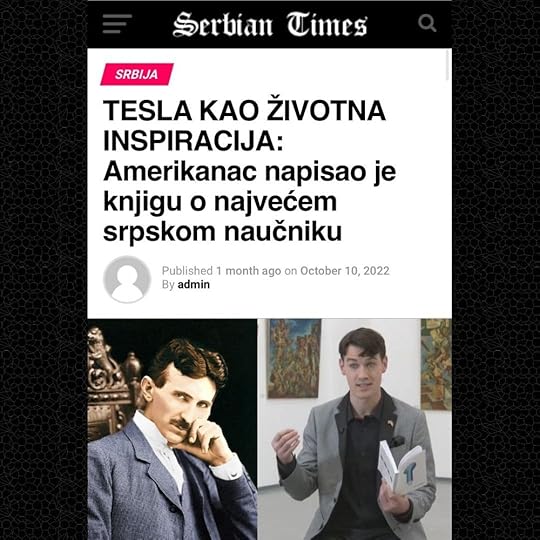
Serbian Times story about Tesla’s Words with image from RTS/ Radio Television Serbia.
SHARE THIS ARTICLE WITH TEACHERS!
Please support the author by following @teslaswords on social media and please rate Tesla’s Words 5-stars on Amazon, Goodreads, or the book retailer of your choice.
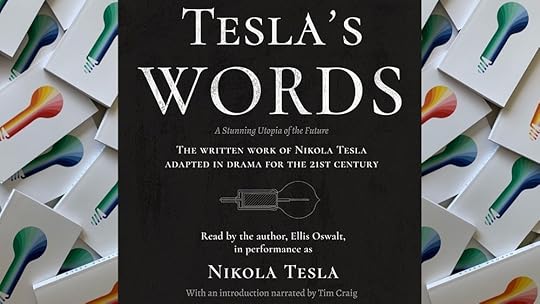

 tap here to buy book
tap here to buy book
September 13, 2023
Tremendous new power soon to be unleashed (1933)
This work is not old enough to be in public domain, but was published in a newspaper that ceased to exist in 1942, and the document seems to have no ownership. If you own the copyright, contact us and we will gladly remove it from our website.
TAP HERE TO RETURN TO THE FREE TESLA LIBRARY.
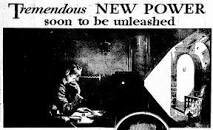
Kansas City Journal-Post
September 10, 1933
By Carol Bird
Nikola Tesla, Starting His 78th Year, Works on Revolutionary Power Project and Also is Completing Process for Photographing Thought
Proving his theory that a man's efficiency and accomplishments should increase, and not diminish with mellow age', Nikola Tesla, inventor, physicist, and one of the world's leading electrical technicians, enters his seventy-eighth year busily engaged on three or four great scientific projects.
Several of these inventions or discoveries will be looked upon as "miracles" by many people, for Mr. Tesla has long been a scientist years ahead of his time, one whose advanced theories have alternately stamped him a "madman" and a wizard.
Just as people ridiculed Copernicus' theory of the planetary system, the unenlightened jeered Tesla's accomplishment, years ago, regarding cosmic rays. The pathfinder and the pioneer - and Mr. Tesla is both - are always condemned by the masses.
Nikola Tesla, tall, lean, with the face of an asthetic and deep-dash set eyes, whose expression denotes concentration on a canvas of work too big for most people's comprehension, partially described a new and inexhaustible source of power he has discovered after years of research, revolutionizing modern physical science. At the same time he touched on his own reservoir of energy which makes such monumental discoveries possible at his advanced age.
How does he tap both these deep wells? What is the secret of fine health, keen mind, unusual vitality and mental force at 77, the time of life when most men are sitting in the sun with shawls over their knees or, alas: lying beneath the sod?
Mr. Tesla is the father of the alternating system of power transmission and radio, the induction motor and Tesla coil.
Asked about his startling new scientific discoveries, one of which concerns the "photographing of thought," which will, he maintains, bring about a tremendous social revolution, he said:
"My first and most important discovery concerns the harnassing of a new source of power, hitherto unavailable, to be developed through fundamentally novel machines of my invention.
"I am not yet prepared to dwell on the details of the project, for they must be checked before my findings can be formally announced. I have worked on the development of the underlying principles for many years. From the practical point of view of the engineer engaged in power development, the first investment will be relatively very great, but once a machine is installed it may be depended on to function indefinitely, and the cost of operation will be next to nothing.
"My power generator will be of the simplest kind - just a big mass of steel, copper and aluminum, comprising a stationary and rotating part, peculiarly assembled. I am planning to develop electricity and transmit it to a distance
by my alternating system now universally established. The direct current system could also be employed if the heretofore insuperable difficulties of insulating the transmission lines can be overcome.
"Such a source of power obtainable everywhere will solve many problems with which the human race is confronted. My alternating system has been the means of harnassing 30,000,000 horsepower of waterpower, and there are projects now going on all over the world which will eventually double that amount. But, unfortunately, there is not enough water power to satisfy the present needs, and everywhere inventors and engineers are endeavoring to unlock some additional store of energy."
Beyond adding that the new form of energy which he has been investigating many years would be available at any place in the world in unlimited quantities, and that the machinery for harnassing it would last more than 5,000 years. Mr. Tesla would say little more on the subject. Just when the power will become available for practical purposes he could not predict with any degree of precision. In a few years, perhaps, he ventured to say.
Mr. Tesla then talked of several projects on which he has been working by way of relief from too much concentration on the main piece of work. He described one of his other interests, one highly dramatic, which stirs the imagination and which, doubtless, will sound too revolutionary to most people. But it must not be forgotten, as Mr. Tesla points out, that the ideas of television and radio and airplane were scoffed at in their infancy .
"I expect to photograph thoughts," announced Mr. Tesla calmly, in the same tone of voice that a person occupied with some trivial things in the scheme of life might announce that it was going to rain.
Continued Mr. Tesla: "In 1893, while engaged in certain investigations, I became convinced that a definite image formed in thought must, by reflex action, produce a corresponding image on the retina, which might possibly be read by suitable apparatus. This brought me to my system of television, which I announced at that time.
"My idea was to employ an artificial retina receiving the image of the object seen, an 'optic nerve' and another such retina at the place of reproduction. These two retinas were to be constructed after the fashion of a checkerboard with many separate little sections, and the so-called optic nerve was nothing more than a part of the earth.
"An invention of mine enables me to transmit simultaneously, and without any interference whatsoever, hundreds of thousands of distinct impulses through the ground just as though I had so many separate wires. I did not contemplate using any moving part - a scanning apparatus or a cathodic ray, which is a sort of moving device, the use of which I suggested in one of my lectures.
"Now if it be true that a thought reflects an image on the retina, it is a mere question of illuminating the same property and taking photographs, and then using the ordinary methods which are available to project the image on a screen.
"If this can be done successfully, then the objects imagined by a person would be clearly reflected on the screen as they are formed, and in this way every thought of the individual could be read. Our minds would then, indeed, be like open books."
Besides his discoveries concerning the harnassing of the new energy, television and thought photography, Mr. Tesla is working to produce a type of radio transmitter which will insure the strictest privacy in wireless communication regardless of the number of subscribers, and he is developing some important discoveries in molecular physics which will revolutionize the science of metallurgy and greatly improve metals.
After a discussion of his new scientific findings, Mr. Tesla turned to the subject of his personal source of energy and what he considers the real values of life.
"One of the most fundamental and also one of the saddest facts in human life is well brought out in a French proverb which, freely translated, means: 'If youth had the knowledge and age the power of doing,"' said Mr. Tesla "our condition of body and mind in old age if merely a certificate of how we have spent our youth. The secret of my own strength and vitality today is that in my youth I led what you might call a virtuous life.
"I have never dissipated. When I was a young man I understood well the significance of that old French proverb, although I doubt that I had even heard it then. But I seem to have a clear understanding while still young that I must control my passions and appetites if I wanted to make some of my dreams come true.
"So with this in view, quite early in life I set about disciplining myself, planning out a program of living for what I considered the most sane and worthwhile life.
"Since I love my work above all things, it is only natural that I should wish to continue it until I die. I want no vacation - no surcease from my labors. If people would select a life work compatible with their temperaments, the sum total of happiness would be immeasurably increased in the world.
"Many are saddened and depressed by the brevity of life. 'What is the use of attempting to accomplish anything?' they say. 'Life is so short. We may never life to see the completion of the task.' Well, people could prolong their lives considerably if they would but make the effort. Human beings do so many things that pave the way to an early grave.
"First of all, we eat too much , but this we have heard said often before. And we eat the wrong kinds of foods and drink the wrong kinds of liquids.
Most of the harm is done by overeating and under exercising, which bring about toxic conditions in the body and make it impossible to throw off the accumulated poisons.
"My regime for the good life and my diet? Well, for one thing, I drink plenty of milk and water. "Why overburden the bodies that serve us? I eat but two meals a day, and I avoid all acid-producing foods. Almost everyone eats too many peas and beans and other foods containing uric acid and other poisons. I partake liberally of fresh vegetables, fish and meat sparingly, and rarely. Fish is reputed as fine brain food, but has a very strong acid reaction, as it contains a great deal of phosphorus. Acidity is by far the worst enemy to fight off in old age.
"Potatoes are splendid, and should be eaten at least once a day. They contain valuable mineral salts and are neutralizing.
"I believe in plenty of exercise. I walk eight or ten miles every day, and never take a cab or other conveyances when I have the time to use leg power. I also exercise in my bath daily, for I think that this is of great importance. I take a warm bath, followed by a prolonged cold shower..
"Sleep? I scarcely ever sleep. I come of a long=lived family, but it is noted for its poor sleepers. I expect to match the records of my ancestors and live to be at least 100.
"My sleeplessness does not worry me. Sometimes I doze for an hour or so. Occasionally, however, once in a few months, I may sleep for four or five hours. Then I awaken virtually charged with energy, like a battery. Nothing can stop me after such a night. I feel great strength then. There is no doubt about it but that sleep is a restorer, a vitalizer, that it increases energy. But on the other hand, I do not think it is essential to one's well being, particularly if one is habitually a poor sleeper.
"Today, at 77, as a result of a well regulated life, sleeplessness notwithstanding, I have an excellent certificate of health. I never felt better in my life. I am energetic, strong, in full possession of all my mental facilties. In my prime I did not possess the energy I have today. And what is more, in solving my problems I use but a small part of the energy I possess, for I have learned how to conserve it. Because of my experience and knowledge gained through the years, my tasks are much lighter. Contrary to general belief, work comes easier for older people if they are in good health, because they have learned through years of practice how to arrive at a given place by the shortest path."
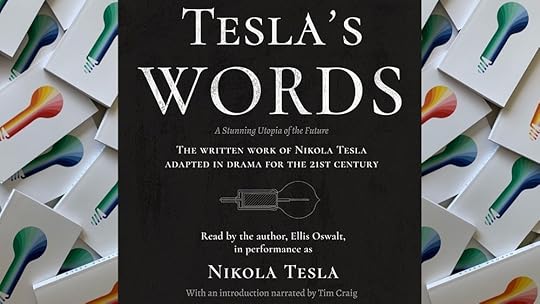
Discover more of Tesla’s Words and follow us on social media for daily Tesla quotes .
Tremendous new power soon to be unleashed
This work is not old enough to be in public domain, but was published in a newspaper that ceased to exist in 1942, and the document seems to have no ownership. If you own the copyright, contact us and we will gladly remove it from our website.
TAP HERE TO RETURN TO THE FREE TESLA LIBRARY.

Kansas City Journal-Post
September 10, 1933
By Carol Bird
Nikola Tesla, Starting His 78th Year, Works on Revolutionary Power Project and Also is Completing Process for Photographing Thought
Proving his theory that a man's efficiency and accomplishments should increase, and not diminish with mellow age', Nikola Tesla, inventor, physicist, and one of the world's leading electrical technicians, enters his seventy-eighth year busily engaged on three or four great scientific projects.
Several of these inventions or discoveries will be looked upon as "miracles" by many people, for Mr. Tesla has long been a scientist years ahead of his time, one whose advanced theories have alternately stamped him a "madman" and a wizard.
Just as people ridiculed Copernicus' theory of the planetary system, the unenlightened jeered Tesla's accomplishment, years ago, regarding cosmic rays. The pathfinder and the pioneer - and Mr. Tesla is both - are always condemned by the masses.
Nikola Tesla, tall, lean, with the face of an asthetic and deep-dash set eyes, whose expression denotes concentration on a canvas of work too big for most people's comprehension, partially described a new and inexhaustible source of power he has discovered after years of research, revolutionizing modern physical science. At the same time he touched on his own reservoir of energy which makes such monumental discoveries possible at his advanced age.
How does he tap both these deep wells? What is the secret of fine health, keen mind, unusual vitality and mental force at 77, the time of life when most men are sitting in the sun with shawls over their knees or, alas: lying beneath the sod?
Mr. Tesla is the father of the alternating system of power transmission and radio, the induction motor and Tesla coil.
Asked about his startling new scientific discoveries, one of which concerns the "photographing of thought," which will, he maintains, bring about a tremendous social revolution, he said:
"My first and most important discovery concerns the harnassing of a new source of power, hitherto unavailable, to be developed through fundamentally novel machines of my invention.
"I am not yet prepared to dwell on the details of the project, for they must be checked before my findings can be formally announced. I have worked on the development of the underlying principles for many years. From the practical point of view of the engineer engaged in power development, the first investment will be relatively very great, but once a machine is installed it may be depended on to function indefinitely, and the cost of operation will be next to nothing.
"My power generator will be of the simplest kind - just a big mass of steel, copper and aluminum, comprising a stationary and rotating part, peculiarly assembled. I am planning to develop electricity and transmit it to a distance
by my alternating system now universally established. The direct current system could also be employed if the heretofore insuperable difficulties of insulating the transmission lines can be overcome.
"Such a source of power obtainable everywhere will solve many problems with which the human race is confronted. My alternating system has been the means of harnassing 30,000,000 horsepower of waterpower, and there are projects now going on all over the world which will eventually double that amount. But, unfortunately, there is not enough water power to satisfy the present needs, and everywhere inventors and engineers are endeavoring to unlock some additional store of energy."
Beyond adding that the new form of energy which he has been investigating many years would be available at any place in the world in unlimited quantities, and that the machinery for harnassing it would last more than 5,000 years. Mr. Tesla would say little more on the subject. Just when the power will become available for practical purposes he could not predict with any degree of precision. In a few years, perhaps, he ventured to say.
Mr. Tesla then talked of several projects on which he has been working by way of relief from too much concentration on the main piece of work. He described one of his other interests, one highly dramatic, which stirs the imagination and which, doubtless, will sound too revolutionary to most people. But it must not be forgotten, as Mr. Tesla points out, that the ideas of television and radio and airplane were scoffed at in their infancy .
"I expect to photograph thoughts," announced Mr. Tesla calmly, in the same tone of voice that a person occupied with some trivial things in the scheme of life might announce that it was going to rain.
Continued Mr. Tesla: "In 1893, while engaged in certain investigations, I became convinced that a definite image formed in thought must, by reflex action, produce a corresponding image on the retina, which might possibly be read by suitable apparatus. This brought me to my system of television, which I announced at that time.
"My idea was to employ an artificial retina receiving the image of the object seen, an 'optic nerve' and another such retina at the place of reproduction. These two retinas were to be constructed after the fashion of a checkerboard with many separate little sections, and the so-called optic nerve was nothing more than a part of the earth.
"An invention of mine enables me to transmit simultaneously, and without any interference whatsoever, hundreds of thousands of distinct impulses through the ground just as though I had so many separate wires. I did not contemplate using any moving part - a scanning apparatus or a cathodic ray, which is a sort of moving device, the use of which I suggested in one of my lectures.
"Now if it be true that a thought reflects an image on the retina, it is a mere question of illuminating the same property and taking photographs, and then using the ordinary methods which are available to project the image on a screen.
"If this can be done successfully, then the objects imagined by a person would be clearly reflected on the screen as they are formed, and in this way every thought of the individual could be read. Our minds would then, indeed, be like open books."
Besides his discoveries concerning the harnassing of the new energy, television and thought photography, Mr. Tesla is working to produce a type of radio transmitter which will insure the strictest privacy in wireless communication regardless of the number of subscribers, and he is developing some important discoveries in molecular physics which will revolutionize the science of metallurgy and greatly improve metals.
After a discussion of his new scientific findings, Mr. Tesla turned to the subject of his personal source of energy and what he considers the real values of life.
"One of the most fundamental and also one of the saddest facts in human life is well brought out in a French proverb which, freely translated, means: 'If youth had the knowledge and age the power of doing,"' said Mr. Tesla "our condition of body and mind in old age if merely a certificate of how we have spent our youth. The secret of my own strength and vitality today is that in my youth I led what you might call a virtuous life.
"I have never dissipated. When I was a young man I understood well the significance of that old French proverb, although I doubt that I had even heard it then. But I seem to have a clear understanding while still young that I must control my passions and appetites if I wanted to make some of my dreams come true.
"So with this in view, quite early in life I set about disciplining myself, planning out a program of living for what I considered the most sane and worthwhile life.
"Since I love my work above all things, it is only natural that I should wish to continue it until I die. I want no vacation - no surcease from my labors. If people would select a life work compatible with their temperaments, the sum total of happiness would be immeasurably increased in the world.
"Many are saddened and depressed by the brevity of life. 'What is the use of attempting to accomplish anything?' they say. 'Life is so short. We may never life to see the completion of the task.' Well, people could prolong their lives considerably if they would but make the effort. Human beings do so many things that pave the way to an early grave.
"First of all, we eat too much , but this we have heard said often before. And we eat the wrong kinds of foods and drink the wrong kinds of liquids.
Most of the harm is done by overeating and under exercising, which bring about toxic conditions in the body and make it impossible to throw off the accumulated poisons.
"My regime for the good life and my diet? Well, for one thing, I drink plenty of milk and water. "Why overburden the bodies that serve us? I eat but two meals a day, and I avoid all acid-producing foods. Almost everyone eats too many peas and beans and other foods containing uric acid and other poisons. I partake liberally of fresh vegetables, fish and meat sparingly, and rarely. Fish is reputed as fine brain food, but has a very strong acid reaction, as it contains a great deal of phosphorus. Acidity is by far the worst enemy to fight off in old age.
"Potatoes are splendid, and should be eaten at least once a day. They contain valuable mineral salts and are neutralizing.
"I believe in plenty of exercise. I walk eight or ten miles every day, and never take a cab or other conveyances when I have the time to use leg power. I also exercise in my bath daily, for I think that this is of great importance. I take a warm bath, followed by a prolonged cold shower..
"Sleep? I scarcely ever sleep. I come of a long=lived family, but it is noted for its poor sleepers. I expect to match the records of my ancestors and live to be at least 100.
"My sleeplessness does not worry me. Sometimes I doze for an hour or so. Occasionally, however, once in a few months, I may sleep for four or five hours. Then I awaken virtually charged with energy, like a battery. Nothing can stop me after such a night. I feel great strength then. There is no doubt about it but that sleep is a restorer, a vitalizer, that it increases energy. But on the other hand, I do not think it is essential to one's well being, particularly if one is habitually a poor sleeper.
"Today, at 77, as a result of a well regulated life, sleeplessness notwithstanding, I have an excellent certificate of health. I never felt better in my life. I am energetic, strong, in full possession of all my mental facilties. In my prime I did not possess the energy I have today. And what is more, in solving my problems I use but a small part of the energy I possess, for I have learned how to conserve it. Because of my experience and knowledge gained through the years, my tasks are much lighter. Contrary to general belief, work comes easier for older people if they are in good health, because they have learned through years of practice how to arrive at a given place by the shortest path."

Discover more of Tesla’s Words and follow us on social media for daily Tesla quotes .
September 8, 2023
U.S. BLOWS UP TESLA RADIO TOWER (1917)
This work is in the public domain and is published here to share with all.
TAP HERE TO RETURN TO THE FREE TESLA LIBRARY.
The Electrical Experimenter, September, 1917, page 293
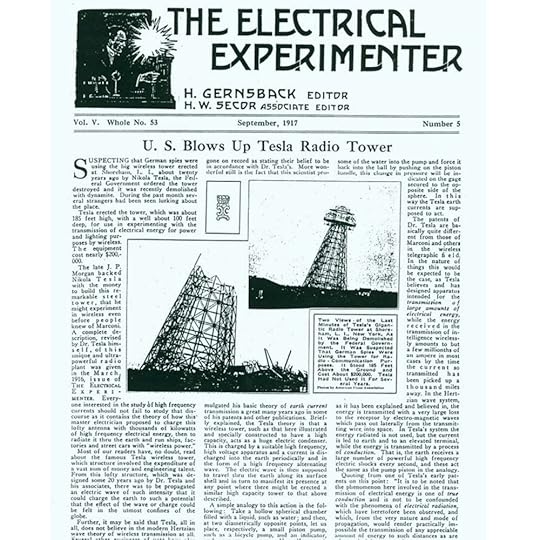
U. S. Blows Up Tesla Radio Tower
Suspecting that German spies were using the big wireless tower erected at Shoreham, L. I., about twenty years ago by Nikola Tesla, the Federal Government ordered the tower destroyed and it was recently demolished with dynamite. During the past month several strangers had been seen lurking about the place.
Tesla erected the tower, which was about 185 feet high, with a well about 100 feet deep, for use in experimenting with the transmission of electrical energy for power and lighting purposes by wireless. The equipment cost nearly $200,000.
The late J. P. Morgan backed Nikola Tesla with the money to build this remarkable steel tower, that he might experiment in wireless even before people knew of Marconi. A complete description, revised by Dr. Tesla himself, of this unique and ultra-powerful radio plant was given in the March, 1916, issue of THE ELECTRICAL EXPERIMENTER. Everyone interested in the study of high frequency currents should not fail to study that discourse as it contains the theory of how this master electrician proposed to charge this lofty antenna with thousands of kilowatts of high frequency electrical energy, then to radiate it thru the earth and run ships, factories and street cars with "wireless power."
Most of our readers have, no doubt, read about the famous Tesla wireless tower, which structure involved the expenditure of a vast sum of money and engineering talent. From this lofty structure, which was designed some 20 years ago by Dr. Tesla and his associates, there was to be propagated an electric wave of such intensity that it could charge the earth to such a potential that the effect of the wave or charge could be felt in the utmost confines of the globe.
Further, it may be said that Tesla, all in all, does not believe in the modern Hertzian wave theory of wireless transmission at all. Several other engineers of note have also gone on record as stating their belief to be in accordance with Dr. Tesla's. More wonderful still is the fact that this scientist promulgated his basic theory of earth current transmission a great many years ago in some of his patents and other publications. Briefly explained, the Tesla theory is that a wireless tower, such as that here illustrated and specially constructed to have a high capacity, acts as a huge electric condenser. This is charged by a suitable high frequency, high voltage apparatus and a current is discharged into the earth periodically and in the form of a high frequency alternating wave. The electric wave is then supposed to travel thru the earth along its surface shell and in turn to manifest its presence at any point where there might be erected a similar high capacity tower to that above described.
A simple analogy to this action is the following: Take a hollow spherical chamber filled with a liquid, such as water; and then, at two diametrically opposite points, let us place, respectively, a small piston pump, such as a bicycle pump, and an indicator, such as a pressure gage. Now, if we suck some of the water into the pump and force it back into the ball by pushing on the piston handle, this change in pressure will be indicated on the gage secured to the opposite side of the sphere. In this way the Tesla earth currents are supposed to act.
The patents of Dr. Tesla are basically quite different from those of Marconi and others in the wireless telegraphic field. In the nature of things this would be expected to be the case, as Tesla believes and has designed apparatus intended for the transmission of large amounts of electrical energy, while the energy received in the transmission of intelligence wirelessly amounts to but a few millionths of an ampere in most cases by the time the current so transmitted has been picked up a thousand miles away. In the Hertzian wave system, as it has been explained and believed in, the energy is transmitted with a very large loss to the receptor by electro-magnetic waves which pass out laterally from the transmitting wire into space. In Tesla's system the energy radiated is not used, but the current is led to earth and to an elevated terminal, while the energy is transmitted by a process of conduction. That is, the earth receives a large number of powerful high frequency electric shocks every second, and these act the same as the pump piston in the analogy.
Quoting from one of Tesla's early patents on this point: "It is to be noted that the phenomenon here involved in the transmission of electrical energy is one of true conduction and is not to be confounded with the phenomena of electrical radiation, which have heretofore been observed, and which, from the very nature and mode of propagation, would render practically impossible the transmission of any appreciable amount of energy to such distances as are of practical importance."
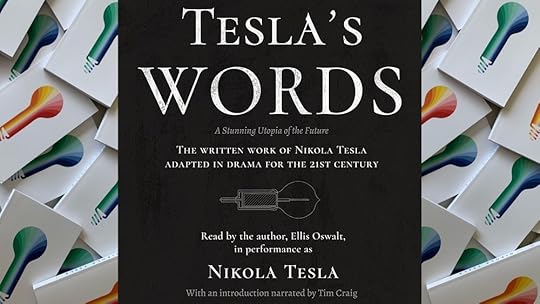
Discover more of Tesla’s Words and follow us on social media for daily Tesla quotes .
U.S. BLOWS UP TESLA RADIO TOWER (SEPT 1917)
This work is in the public domain and is published here to share with all.
TAP HERE TO RETURN TO THE FREE TESLA LIBRARY.
The Electrical Experimenter, September, 1917, page 293

U. S. Blows Up Tesla Radio Tower
Suspecting that German spies were using the big wireless tower erected at Shoreham, L. I., about twenty years ago by Nikola Tesla, the Federal Government ordered the tower destroyed and it was recently demolished with dynamite. During the past month several strangers had been seen lurking about the place.
Tesla erected the tower, which was about 185 feet high, with a well about 100 feet deep, for use in experimenting with the transmission of electrical energy for power and lighting purposes by wireless. The equipment cost nearly $200,000.
The late J. P. Morgan backed Nikola Tesla with the money to build this remarkable steel tower, that he might experiment in wireless even before people knew of Marconi. A complete description, revised by Dr. Tesla himself, of this unique and ultra-powerful radio plant was given in the March, 1916, issue of THE ELECTRICAL EXPERIMENTER. Everyone interested in the study of high frequency currents should not fail to study that discourse as it contains the theory of how this master electrician proposed to charge this lofty antenna with thousands of kilowatts of high frequency electrical energy, then to radiate it thru the earth and run ships, factories and street cars with "wireless power."
Most of our readers have, no doubt, read about the famous Tesla wireless tower, which structure involved the expenditure of a vast sum of money and engineering talent. From this lofty structure, which was designed some 20 years ago by Dr. Tesla and his associates, there was to be propagated an electric wave of such intensity that it could charge the earth to such a potential that the effect of the wave or charge could be felt in the utmost confines of the globe.
Further, it may be said that Tesla, all in all, does not believe in the modern Hertzian wave theory of wireless transmission at all. Several other engineers of note have also gone on record as stating their belief to be in accordance with Dr. Tesla's. More wonderful still is the fact that this scientist promulgated his basic theory of earth current transmission a great many years ago in some of his patents and other publications. Briefly explained, the Tesla theory is that a wireless tower, such as that here illustrated and specially constructed to have a high capacity, acts as a huge electric condenser. This is charged by a suitable high frequency, high voltage apparatus and a current is discharged into the earth periodically and in the form of a high frequency alternating wave. The electric wave is then supposed to travel thru the earth along its surface shell and in turn to manifest its presence at any point where there might be erected a similar high capacity tower to that above described.
A simple analogy to this action is the following: Take a hollow spherical chamber filled with a liquid, such as water; and then, at two diametrically opposite points, let us place, respectively, a small piston pump, such as a bicycle pump, and an indicator, such as a pressure gage. Now, if we suck some of the water into the pump and force it back into the ball by pushing on the piston handle, this change in pressure will be indicated on the gage secured to the opposite side of the sphere. In this way the Tesla earth currents are supposed to act.
The patents of Dr. Tesla are basically quite different from those of Marconi and others in the wireless telegraphic field. In the nature of things this would be expected to be the case, as Tesla believes and has designed apparatus intended for the transmission of large amounts of electrical energy, while the energy received in the transmission of intelligence wirelessly amounts to but a few millionths of an ampere in most cases by the time the current so transmitted has been picked up a thousand miles away. In the Hertzian wave system, as it has been explained and believed in, the energy is transmitted with a very large loss to the receptor by electro-magnetic waves which pass out laterally from the transmitting wire into space. In Tesla's system the energy radiated is not used, but the current is led to earth and to an elevated terminal, while the energy is transmitted by a process of conduction. That is, the earth receives a large number of powerful high frequency electric shocks every second, and these act the same as the pump piston in the analogy.
Quoting from one of Tesla's early patents on this point: "It is to be noted that the phenomenon here involved in the transmission of electrical energy is one of true conduction and is not to be confounded with the phenomena of electrical radiation, which have heretofore been observed, and which, from the very nature and mode of propagation, would render practically impossible the transmission of any appreciable amount of energy to such distances as are of practical importance."

Discover more of Tesla’s Words and follow us on social media for daily Tesla quotes .
On Electricity by Nikola Telsa
This work is in the public domain and is published here to share with all.
TAP HERE TO RETURN TO THE FREE TESLA LIBRARY.
Electrical Review, January 27, 1897
The Address On the Occasion of the Commemoration of the Introduction of Niagara Falls Power In Buffalo At the Ellicot Club, January 12, 1897
I have scarcely had courage enough to address an audience on a few unavoidable occasions, and the experience of this evening, even as disconnected from the cause of our meeting, is quite novel to me. Although in those few instances, of which I have retained agreeable memory, my words have met with a generous reception, I never deceived myself, and knew quite well that my success was not due to any excellency in the rhetorical or demonstrative art. Nevertheless, my sense of duty to respond to the request with which I was honored a few days ago was strong enough to overcome my very grave apprehensions in regard to my ability of doing justice to the topic assigned to me. It is true, at times—even now, as I speak—my mind feels full of the subject, but I know that, as soon as I shall attempt expression, the fugitive conceptions will vanish, and I shall experience certain well known sensations of abandonment, chill and silence. I can see already your disappointed countenances and can read in them the painful regret of the mistake in your choice.
These remarks, gentlemen, are not made with selfish desire of winning your kindness and indulgence on my shortcomings, but with the honest intention of offering you an apology for your disappointment. Nor are they made—as you might be disposed to think—in that playful spirit which, to the enjoyment of the listeners is often displayed by belated speakers. On the contrary, I am deeply earnest in my wish that I were capable of having the fire of eloquence kindled in me, that I might dwell in adequate terms on this fascinating science of electricity, on the marvelous development which electrical annals have recorded and which, as one of the speakers justly remarked, stamp this age as the Electrical Age, and particularly on the great event we are commemorating this day. Unfortunately, this my desire must remain unfulfilled, but I am hopeful that in my formless and incomplete statements, among the few ideas and facts I shall mention there may be something of interest and usefulness, something befitting this unique occasion.
Gentlemen, there are a number of features clearly discernible in, and characteristic of, human intellectual progress in more recent times—features which afford great comfort to the minds of all those who have really at heart the advancement and welfare of mankind.
First of all the inquiry, by the aid of the microscope and electrical instruments of precision, into the nature of our organs and senses, and particularly of those through which we commune directly with the outside world and through which knowledge is conveyed to our minds, has revealed their exact construction and mode of action, which is in conformity with simple and well established physical principles and laws. Hence the observations we make and the facts we ascertain by their help are real facts and observations, and our knowledge is true knowledge. To illustrate: Our knowledge of form, for instance, is dependent upon the positive fact that light propagates in straight lines, and, owing to this, the image formed by a lens is exactly similar to the object seen. Indeed, my thoughts in such fields and directions have led me to the conclusion that most all human knowledge is based on this simple truth, since practically every idea or conception—and therefore all knowledge—presupposes visual impressions. But if light would not propagate in accordance with the law mentioned, but in conformity with any other law which we might presently conceive, whereby not only the image might not bear any likeness to the object seen, but even the images of the same object at different times or distances might not resemble each other, then our knowledge of form would be very defective, for then we might see, for example, a three-cornered figure as a six or twelve-cornered one. With the clear understanding of the mechanism and mode of action of our organs, we remove all doubts as to the reality and truth of the impressions received from the outside, and thus we bar out—forever, we may hope—that unhealthy speculation and skepticism into which formerly even strong minds were apt to fall.
Let me tell you of another comforting feature. The progress in a measured time is nowadays more rapid and greater than it ever was before. This is quite in accordance with the fundamental law of motion, which commands acceleration and increase of momentum or accumulation of energy under the action of a continuously acting force and tendency, and is the more true as every advance weakens the elements tending to produce friction and retardation. For, after all, what is progress, or—more correctly—development, or evolution, if not a movement, infinitely complex and often unscrutinizable, it is true, but nevertheless exactly determined in quantity as well as in quality of motion by the physical conditions and laws governing? This feature of more recent development is best shown in the rapid merging together of the various arts and sciences by the obliteration of the hard and fast lines of separation, of borders, some of which only a few years ago seemed unsurpassable, and which, like veritable Chinese walls, surrounded every department of inquiry and barred progress. A sense of connectedness of the various apparently widely different forces and phenomena we observe is taking possession of our minds, a sense of deeper understanding of nature as a whole, which, though not yet quite clear and defined, is keen enough to inspire us with the confidence of vast realizations in the near future.
But these features chiefly interest the scientific man, the thinker and reasoner. There is another feature which affords us still more satisfaction and enjoyment, and which is of still more universal interest, chiefly because of its bearing upon the welfare of mankind. Gentlemen, there is an influence which is getting strong and stronger day by day, which shows itself more and more in all departments of human activity, and influence most fruitful and beneficial—the influence of the artist. It was a happy day for the mass of humanity when the artist felt the desire of becoming a physician, an electrician, an engineer or mechanician or—whatnot—a mathematician or a financier; for it was he who wrought all these wonders and grandeur we are witnessing. It was he who abolished that small, pedantic, narrow-grooved school teaching which made of an aspiring student a galley-slave, and he who allowed freedom in the choice of subject of study according to one's pleasure and inclination, and so facilitated development.
Some, who delight in the exercise of the powers of criticism, call this an asymmetrical development, a degeneration or departure from the normal, or even a degradation of the race. But they are mistaken. This is a welcome state of things, a blessing, a wise subdivision of labors, the establishment of conditions most favorable to progress. Let one concentrate all his energies in one single great effort, let him perceive a single truth, even though he be consumed by the sacred fire, then millions of less gifted men can easily follow. Therefore it is not as much quantity as quality of work which determines the magnitude of the progress.
It was the artist, too, who awakened that broad philanthropic spirit which, even in old ages, shone in the teachings of noble reformers and philosophers, that spirit which makes men in all departments and positions work not as much for any material benefit or compensation—though reason may command this also—but chiefly for the sake of success, for the pleasure there is in achieving it and for the good they might be able to do thereby to their fellow-men. Through his influence types of men are now pressing forward, impelled by a deep love for their study, men who are doing wonders in their respective branches, whose chief aim and enjoyment is the acquisition and spread of knowledge, men who look far above earthly things, whose banner is Excelsior! Gentlemen, let us honor the artist; let us thank him, let us drink his health!
Now, in all these enjoyable and elevating features which characterize modern intellectual development, electricity, the expansion of the science of electricity, has been a most potent factor. Electrical science has revealed to us the true nature of light, has provided us with innumerable appliances and instruments of precision, and has thereby vastly added to the exactness of our knowledge. Electrical science has disclosed to us the more intimate relation existing between widely different forces and phenomena and has thus led us to a more complete comprehension of Nature and its many manifestations to our senses. Electrical science, too, by its fascination, by its promises of immense realizations, of wonderful possibilities chiefly in humanitarian respects, has attracted the attention and enlisted the energies of the artist; for where is there a field in which his God-given powers would be of a greater benefit to his fellow-men than this unexplored, almost virgin, region, where, like in a silent forest, a thousand voices respond to every call?
With these comforting features, with these cheering prospects, we need not look with any feeling of incertitude or apprehension into the future. There are pessimistic men, who, with anxious faces, continuously whisper in your ear that the nations are secretly arming—arming to the teeth; that they are going to pounce upon each other at a given signal and destroy themselves; that they are all trying to outdo that victorious, great, wonderful German army, against which there is no resistance, for every German has the discipline in his very blood—every German is a soldier, But these men are in error. Look only at our recent experience with the British in that Venezuela difficulty. Two other nations might have crashed together, but not the Anglo-Saxons; they are too far ahead. The men who tell you this are ignoring forces which are continually at work, silently but resistlessly—forces which say Peace!
There is the genuine artist, who inspires us with higher and nobler sentiments, and makes us abhor strife and carnage. There is the engineer, who bridges gulfs and chasms, and facilitates contact and equalization of the heterogeneous masses of humanity. There is the mechanic, who comes with his beautiful time and energy-saving appliances, who perfects his flying machine, not to drop a bag of dynamite on a city or vessel, but to facilitate transport and travel. There, again, is the chemist, who opens new resources and makes existence more pleasant and secure; and there is the electrician, who sends his messages of peace to all parts of the globe. The time will not be long in coming when those men who are turning their ingenuity to inventing quick-firing guns, torpedoes and other implements of destruction—all the while assuring you that it is for the love and good of humanity—will find no takers for their odious tools, and will realize that, had they used their inventive talent in other directions; they might have reaped a far better reward than the sestertia received. And then, and none too soon the cry will be echoed everywhere. Brethren, stop these high-handed methods of the strong, these remnants of barbarism so inimical to progress! Give that valiant warrior opportunities for displaying a more commendable courage than that he shows when, intoxicated with victory, he rushes to the destruction of his fellow-men. Let him toil day and night with a small chance of achieving and yet be unflinching; let him challenge the dangers of exploring the heights of the air and the depths of the sea; let him brave the dread of the plague, the heat of the tropic desert and the ice of the polar region. Turn your energies to warding off the common enemies and danger, the perils that are all around you, that threaten you in the air you breathe, in the water you drink, in the food you consume. It is not strange, is it not shame, that we, beings in the highest state of development in this our world, beings with such immense powers of thought and action, we, the masters of the globe, should be absolutely at the mercy of our unseen foes, that we should not know whether a swallow of food or drink brings joy and life or pain and destruction to us! In this most modern and sensible warfare, in which the bacteriologist leads, the services electricity will render will prove invaluable. The economical production of high-frequency currents, which is now an accomplished fact, enables us to generate easily and in large quantities ozone for the disinfection of the water and the air, while certain novel radiations recently discovered give hope of finding effective remedies against ills of microbic origin, which have heretofore withstood all efforts of the physician. But let me turn to a more pleasant theme.
I have referred to the merging together of the various sciences or departments of research, and to a certain perception of intimate connection between the manifold and apparently different forces and phenomena. Already we know, chiefly through the efforts of a bold pioneer, that light, radiant heat, electrical and magnetic actions are closely related, not to say identical. The chemist professes that the effects of combination and separation of bodies he observes are due to electrical forces, and the physician and physiologist will tell you that even life's progress is electrical. Thus electrical science has gained a universal meaning, and with right this age can claim the name "Age of Electricity."
I wish much to tell you on this occasion—I may say I actually burn for desire of telling you—what electricity really is, but I have very strong reasons, which my coworkers will best appreciate, to follow a precedent established by a great and venerable philosopher, and I shall not dwell on this purely scientific aspect of electricity.
There is another reason for the claim which I have before stated which is even more potent than the former, and that is the immense development in all electrical branches in more recent years and its influence upon other departments of science and industry. To illustrate this influence I only need to refer to the steam or gas engine. For more than half a century the steam engine has served the innumerable wants of man. The work it was called to perform was of such variety and the conditions in each case were so different that, of necessity, a great many types of engines have resulted. In the vast majority of cases the problem put before the engineer was not as it should have been, the broad one of converting the greatest possible amount of heat energy into mechanical power, but it was rather the specific problem of obtaining the mechanical power in such form as to be best suitable for general use. As the reciprocating motion of the piston was not convenient for practical purposes, except in very few instances, the piston was connected to a crank, and thus rotating motions was obtained, which was more suitable and preferable, though it involved numerous disadvantages incident to the crude and wasteful means employed. But until quite recently there were at the disposal of the engineer, for the transformation and transmission of the motion of the piston, no better means than rigid mechanical connections. The past few years have brought forcibly to the attention of the builder the electric motor, with its ideal features. Here was a mode of transmitting mechanical motion simpler by far, and also much more economical. Had this mode been perfected earlier, there can be no doubt that, of the many different types of engine, the majority would not exist, for just as soon as an engine was coupled with an electric generator a type was produced capable of almost universal use. From this moment on there was no necessity to endeavor to perfect engines of special designs capable of doing special kinds of work. The engineer's task became now to concentrate all his efforts upon one type, to perfect one kind of engine—the best; the universal, the engine of the immediate future; namely, the one which is best suitable for the generation of electricity. The first efforts in this direction gave a strong impetus to the development of the reciprocating high speed engine, and also to the turbine, which latter was a type of engine of very limited practical usefulness, but became, to a certain extent, valuable in connection with the electric generator and motor. Still, even the former engine, though improved in many particulars, is not radically changed, and even now has the same objectionable features and limitations. To do away with these as much as possible, a new type of engine is being perfected in which more favorable conditions for economy are maintained, which expands the working fluid with utmost rapidity and loses little heat on the walls, an engine stripped of all usual regulating mechanism—packings, oilers and other appendages—and forming part of an electric generator; and in this type, I may say, I have implicit faith.
The gas or explosive engine has been likewise profoundly affected by the commercial introduction of electric light and power, particularly in quite recent years. The engineer is turning his energies more and more in this direction, being attracted by the prospect of obtaining a higher thermodynamic efficiency. Much larger engines are now being built, the construction is constantly improved, and a novel type of engine, best suitable for the generation of electricity, is being rapidly evolved.
There are many other lines of manufacture and industry in which the influence of electrical development has been even more powerfully felt. So, for instance, the manufacture of a great variety of articles of metal, and especially of chemical products. The welding of metals by electricity, though involving a wasteful process, has, nevertheless, been accepted as a legitimate art, while the manufacture of metal sheet, seamless tubes and the like affords promise of much improvement. We are coming gradually, but surely, to the fusion of bodies and reduction of all kinds of ores—even of iron ores—by the use of electricity, and in each of these departments great realizations are probable. Again, the economical conversion of ordinary currents of supply into high-frequency currents opens up new possibilities, such as the combination of the atmospheric nitrogen and the production of its compounds; for instance, ammonia and nitric acid, and their salts, by novel processes.
The high-frequency currents also bring us to the realization of a more economical system of lighting; namely by means of phosphorescent bulbs or tubes, and enable us to produce with these appliances light of practically any candle-power. Following other developments in purely electrical lines, we have all rejoiced in observing the rapid strides made, which, in quite recent years, have been beyond our most sanguine expectations. To enumerate the many advances recorded is a subject for the reviewer, but I can not pass without mentioning the beautiful discoveries of Lenart and Roentgen, particularly the latter, which have found such a powerful response throughout the scientific world that they have made us forget, for a time, the great achievement of Linde in Germany, who has effected the liquefaction of air on an industrial scale by a process of continuous cooling: the discovery of argon by Lord Rayleigh and Professor Ramsay, and the splendid pioneer work of Professor Dewar in the field of low temperature research. The fact that the United States have contributed a very liberal share to this prodigious progress must afford to all of us great satisfaction. While honoring the workers in other countries and all those who, by profession or inclination, are devoting themselves to strictly scientific pursuits, we have particular reasons to mention with gratitude the names of those who have so much contributed to this marvelous development of electrical industry in this country. Bell, who, by his admirable invention enabling us to transmit speech to great distances, has profoundly affected our commercial and social relations, and even our very mode of life; Edison, who, had he not done anything else beyond his early work in incandescent lighting, would have proved himself one of the greatest benefactors of the age; Westinghouse, the founder of the commercial alternating system; Brush, the great pioneer of arc lighting; Thomson, who gave us the first practical welding machine, and who, with keen sense, contributed very materially to the development of a number of scientific and industrial branches; Weston, who once led the world in dynamo design, and now leads in the construction of electric instruments; Sprague, who, with rare energy, mastered the problem and insured the success of practical electrical railroading; Acheson, Hall, Willson and others, who are creating new and revolutionizing industries here under our very eyes at Niagara. Nor is the work of these gifted men nearly finished at this hour. Much more is still to come, form fortunately, most of them are still full of enthusiasm and vigor. All of these men and many more are untiringly at work investigating new regions and opening up unsuspected and promising fields. Weekly, if not daily, we learn through the journals of a new advance into some unexplored region, where at every step success beckons friendly, and leads the toiler on to hard and harder tasks.
But among all these many departments of research, these many branches of industry, new and old, which are being rapidly expanded, there is one dominating all others in importance—one which is of the greatest significance for the comfort and welfare, not to say for the existence, of mankind, and that is the electrical transmission of power. And in this most important of all fields, gentlemen, long afterwards, when time will have placed the events in their proper perspective, and assigned men to their deserved places, the great event we are commemorating today will stand out as designating a new and glorious epoch in the history of humanity—an epoch grander than that marked by the advent of the steam engine. We have many a monument of past ages: we have the palaces and pyramids, the temples of the Greek and the cathedrals of Christendom. In them is exemplified the power of men, the greatness of nations, the love of art and religious devotion. But that monument at Niagara has something of its own, more in accord with our present thoughts and tendencies. It is a monument worthy of our scientific age, a true monument of enlightenment and of peace. It signifies the subjugation of natural forces to the service of man, the discontinuance of barbarous methods, the relieving of millions from want and suffering. No matter what we attempt to do, no matter to what fields we turn our efforts, we are dependent on power. Our economists may propose more economical systems of administration and utilization of resources, our legislators may make wiser laws and treaties, it matters little; that kind of help can be only temporary. If we want to reduce poverty and misery, if we want to give to every deserving individual what is needed for a safe existence of an intelligent being, we want to provide more machinery, more power. Power is our mainstay, the primary source of our many-sided energies. With sufficient power at our disposal we can satisfy most of our wants and offer a guaranty for safe and comfortable existence to all, except perhaps to those who are the greatest criminals of all—the voluntarily idle.
The development and wealth of a city, the success of a nation, the progress of the whole human race, is regulated by the power available. Think of the victorious march of the British, the like of which history has never recorded. Apart from the qualities of the race, which have been of great moment, they own the conquest of the world to—coal. For with coal they produce their iron; coal furnishes them light and heat; coal drives the wheels of their immense manufacturing establishments, and coal propels their conquering fleets. But the stores are being more and more exhausted; the labor is getting dearer and dearer, and the demand is continuously increasing. It must be clear to every one that soon some new source of power supply must be opened up, or that at least the present methods must be materially improved. A great deal is expected from a more economical utilization of the stored energy of the carbon in a battery; but while the attainment of such a result would be hailed as a great achievement; it would not be as much of an advance towards the ultimate and permanent method of obtaining power as some engineers seem to believe. By reasons both of economy and convenience we are driven to the general adoption of a system of energy supply from central stations, and for such purposes the beauties of the mechanical generation of electricity can not be exaggerated. The advantages of this universally accepted method are certainly so great that the probability of replacing the engine dynamos by batteries is, in my opinion, a remote one, the more so as the high-pressure steam engine and gas engine give promise of a considerably more economical thermodynamic conversion. Even if we had this day such an economical coal battery, its introduction in central stations would by no means be assured, as its use would entail many inconveniences and drawbacks. Very likely the carbon could not be burned in its natural form as in a boiler, but would have to be specially prepared to secure uniformity in the current generation. There would be a great many cells needed to make up the electro-motive force usually required. The process of cleaning and renewal, the handling of nasty fluids and gases and the great space necessary for so many batteries would make it difficult, if not commercially unprofitable, to operate such a plant in a city or densely populated district. Again if the station be erected in the outskirts, the conversion by rotating transformers or otherwise would be a serious and unavoidable drawback. Furthermore, the regulating appliances and other accessories which would have to be provided would probably make the plant fully as much, if not more, complicated than the present. We might, of course, place the batteries at or near the coal mine, and from there transmit the energy to distant points in the form of high-tension alternating currents obtained from rotating transformers, but even in this most favorable case the process would be a barbarous one, certainly more so than the present, as it would still involve the consumption of material, while at the same time it would restrict the engineer and mechanic in the exercise of their beautiful art. As to the energy supply in small isolated places as dwellings, I have placed my confidence in the development of a light storage battery, involving the use of chemicals manufactured by cheap water power, such as some carbide or oxygen-hydrogen cell.
But we shall not satisfy ourselves simply with improving steam and explosive engines or inventing new batteries; we have something much better to work for, a greater task to fulfill. We have to evolve means for obtaining energy from stores which are forever inexhaustible, to perfect methods which do not imply consumption and waste of any material whatever. Upon this great possibility, which I have long ago recognized, upon this great problem, the practical solution of which means so much for humanity, I have myself concentrated my efforts since a number of years, and a few happy ideas which came to me have inspired me to attempt the most difficult, and given me strength and courage in adversity. Nearly six years ago my confidence had become strong enough to prompt me to an expression of hope in the ultimate solution of this all dominating problem. I have made progress since, and have passed the stage of mere conviction such as is derived from a diligent study of known facts, conclusions and calculations. I now feel sure that the realization of that idea is not far off. But precisely for this reason I feel impelled to point out here an important fact, which I hope will be remembered. Having examined for a long time the possibilities of the development I refer to, namely, that of the operation of engines on any point of the earth by the energy of the medium, I find that even under the theoretically best conditions such a method of obtaining power can not equal in economy, simplicity and many other features the present method, involving a conversion fo the mechanical energy of running water into electrical energy and the transmission of the latter in the form of currents of very high tension to great distances. Provided, therefore, that we can avail ourselves of currents of sufficiently high tension, a waterfall affords us the most advantageous means of getting power from the sun sufficient for all our wants, and this recognition has impressed me strongly with the future importance of the water power, not so much because of its commercial value, though it may be very great, but chiefly because of its bearing upon our safety and welfare. I am glad to say that also in this latter direction my efforts have not been unsuccessful, for I have devised means which will allow us the use in power transmission of electromotive forces much higher than those practicable with ordinary apparatus. In fact, progress in this field has given me fresh hope that I shall see the fulfillment of one of my fondest dreams; namely, the transmission of power from station to station without the employment of any connecting wire. Still, whatever method of transmission be ultimately adopted, nearness to the source of power will remain an important advantage.
Gentlemen, some of the ideas I have expressed may appear to many of you hardly realizable; nevertheless, they are the result of long-continued thought and work. You would judge them more justly if you would have devoted your life to them, as I have done. With ideas it is like with dizzy heights you climb: At first they cause you discomfort and you are anxious to get down, distrustful of your own powers; but soon the remoteness of the turmoil of life and the inspiring influence of the altitude calm your blood; your step gets firm and sure and you begin to look—for dizzier heights. I have attempted to speak to you on "Electricity," its development and influence, but I fear that I have done it much like a boy who tries to draw a likeness with a few straight lines. But I have endeavored to bring out one feature, to speak to you in one strain which I felt sure would find response in the hearts of all of you, the only one worthy of this occasion—the humanitarian. In the great enterprise at Niagara we see not only a bold engineering and commercial feat, but far more, a giant stride in the right direction as indicated both by exact science and philanthropy. Its success is a signal for the utilization of water powers all over the world, and its influence upon industrial development is incalculable. We must all rejoice in the great achievement and congratulate the intrepid pioneers who have joined their efforts and means to bring it about. It is a pleasure to learn of the friendly attitude of the citizens of Buffalo and of the encouragement given to the enterprise by the Canadian authorities. We shall hope that other cities, like Rochester on this side and Hamilton and Toronto in Canada, will soon follow Buffalo's lead. This fortunate city herself is to be congratulated. With resources now unequaled, with commercial facilities and advantages such as few cities in the world possess, and with the enthusiasm and progressive spirit of its citizens, it is sure to become one of the greatest industrial centers of the globe.
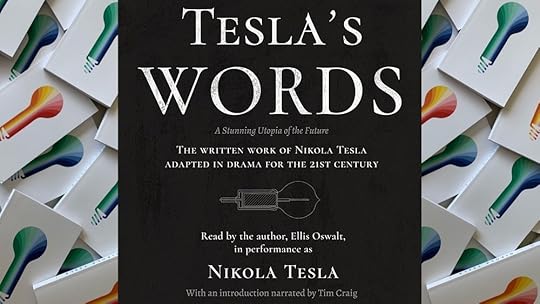
Discover more of Tesla’s Words and follow us on social media for daily Tesla quotes with attached source documentation.
August 31, 2023
SECRET OF NIKOLA TESLA REVEALED 100 YEARS LATER
“The last person to talk about this died in 1943, and his name was Nikola Tesla.”
Ellis Oswalt stated on Radio Belgrade.

The young American author traveled to Serbia to speak about the visions that plagued Tesla for his entire life, and the new book, Tesla’s Words. A few days before, he said something similar on live television for K1 Morning:
“A lot of people get angry and think I’m making this up, but it comes directly from Nikola Tesla. These are his words, not mine.” Oswalt explained:
“It is often said that Tesla could see things ‘in his mind’ but there are many of his quotes I can use to show you he was seeing things ‘outside’ his mind. In other words, hallucinations. He has this quote saying he would wave his arm and watch his hand go right through a hallucinated object he was seeing.
So, when people say he 'saw things in his mind’—I have no doubt this was also true, but he is telling us that he also sees things outside, in his direct field of vision. Hallucinations. He, at one point, even uses this word to describe it.”
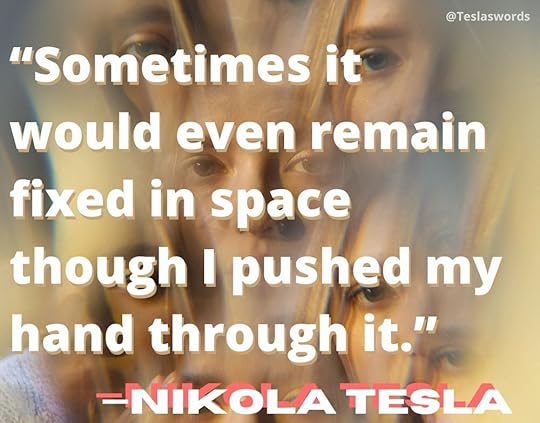
A quote from Tesla about his hallucinations.
Source:
Electrical Experimenter (magazine)
February, 1919
My Inventions: Part I
By Nikola Tesla
(Read it here for free)
At a press center on Knez Mihailova, Ellis gave more detail in an hour-long lecture Nikola Tesla: Decades of Wisdom from his Interviews in American Media:
“One reason this is always brushed aside, is because people say this was only for a short period of time in Tesla’s childhood. Well, I can show this is not true… according to Nikola Tesla. He did say it was most intense in his childhood, but he speaks about this at all stages of his life. Let’s take a look at this quote from his autobiography.”
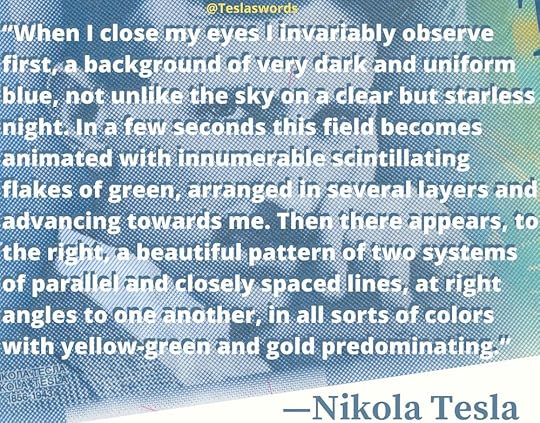
A quote from Tesla about his visions.
Source:
Electrical Experimenter (magazine)
February, 1919
My Inventions: Part I
By Nikola Tesla
(Read it here for free)
Oswalt chimes in with helpful commentary, saying:
“Notice at the beginning of this quote he says ‘when I close my eyes.’
This is present tense. He is writing this at the age of 62 in the year 1919.
'When. I. Close. My. Eyes.'
Not 'When I closed my eyes as a young boy.’
He is talking about himself now, at the age of 62.
This is his life’s experience.”
With another audience at American Corner Belgrade, he humbly admits:
“I am not a historian or a scientist. I don’t have a Ph.D. But I searched through every book and film about Tesla in the English language trying to find more information, and no one has ever talked about this. I don’t know how this is possible. I don’t even know what any of this means…
I became a small expert on Tesla in the process, and I was lucky enough to be interviewed by Australian Associated Press when they needed help to identify if a quote was a fake or not.”
The author explained that Nikola Tesla’s autobiography is unique compared to his abundance of other writings.
“Tesla was a superb communicator. His other writings are easy to follow. But the six magazine articles that make up his autobiography are oddly disorganized. According to a book published by the Belgrade Tesla Museum for Tesla’s 150th birthday, these articles were rushed during production. The editor was frustrated by Tesla’s inability to meet deadlines, and Tesla himself was concerned, obsessively, with matters of science.”
He adds:
“I had been working on this project for years already, and when I found this book published by the Tesla museum suggesting that there is something rushed about his autobiography, I said,
‘Ahh, I knew it!’ ”.
Tesla’s autobiography was written in 1919, but it a difficult reading experience, almost on par with works of Shakespeare’s time. There are a myriad of strange obstacles making the text demanding for a casual reader, but Oswalt notes forgotten clues scattered all throughout the document.
Tesla’s Words serves this on a silver platter for the reader in the form of a story. This unique 200-page novella sheds new light on history’s best super-genius.
“Ellis is an extraordinary talent. His communication skills are fascinating.”
—Dr. Branimir Jovanović
Nikola Tesla expert, author, & aerospace engineer
“A startling peek into the mind of a true genius.”
—Kirkus Reviews
“…Reading of this book was a spiritual experience.”
—Dr. Vujo Knezević
Neurosurgeon;
Tesla Forum of Western Australia
“I’ve read more than 40 books on this subject, and this one blew me away.”
—Alex Dejanović PhD
Spine specialist;
Academia Athos, Novi Sad
“This was very useful. I read the original before I helped proofread Tesla’s Words, and I’m surprised at how many details I missed at first.”
—David Chester PhD
Researcher at Quantum Gravity Research
“Tesla in his own words. Great read by Ellis Oswalt.”
—John Nosta
WHO Roster of Experts; Google Health Advisory Board;
former Chief Creative Officer & Chief Strategic Officer of Ogilvy CommonHealth
5/5 stars
"TESLA’S WORDS is a short book… yet readers will learn as much about Tesla from this as they might from a scholarly 600-page biography."
—IndieReader
 BEST BIOGRAPHY OF 2022 BY INDIEREADER
BEST BIOGRAPHY OF 2022 BY INDIEREADER

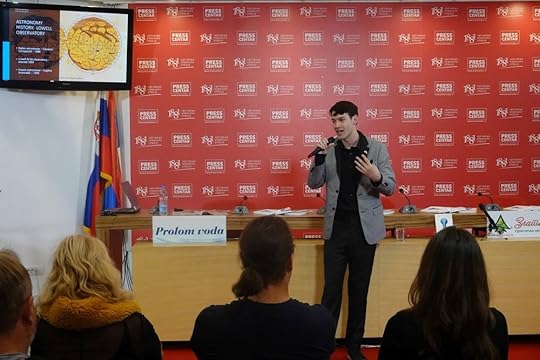
Press Centar UNS Belgrade, Serbia

Serbian poet Maja Herman-Sekulić PhD (middle).


A free event at Belgrade Ada Mall with musical performance by Sister’s Gobović, sponsored by Alex Pertini.
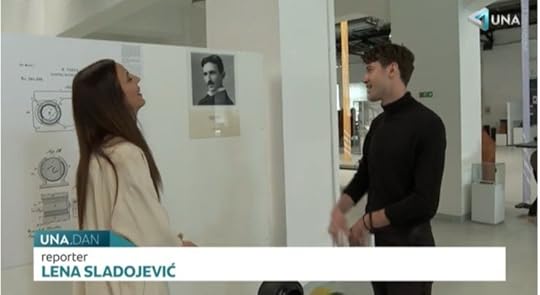

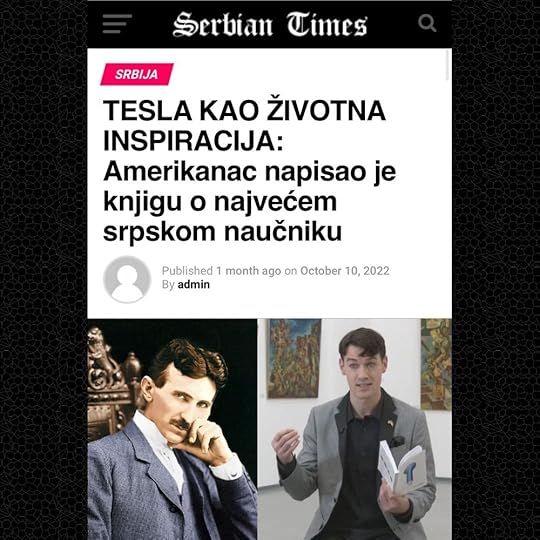
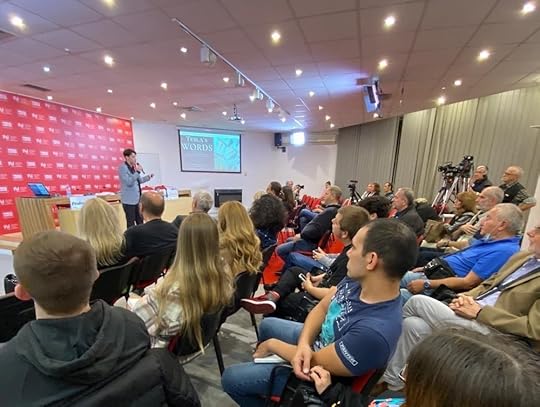
Press Centar UNS Belgrade, Serbia
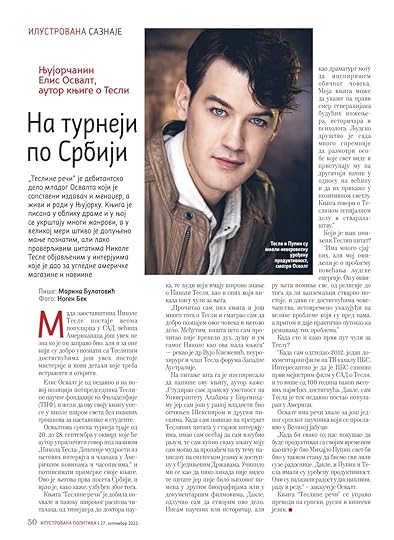
Ilustrovana Magazine

Fr. Oliver Subotić PhD (left) author of Tesla: Spiritual Character.

Serbian author Maja Cvetkovic-Sotirov PhD (left).

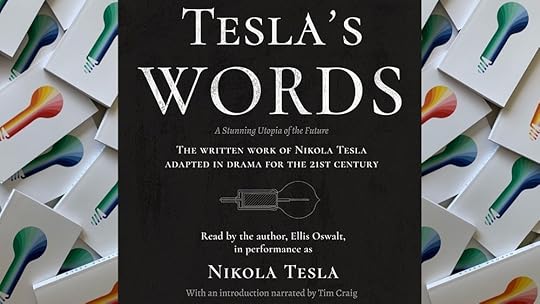


A special thanks to the people of Serbia for their generous hospitality, and to all readers around the globe. Tesla’s Words is a small project with no advertising budget, and grows by word-of-mouth from readers like you.
Please share our website with your local educators, and tell them Tesla’s Words is free for teachers who wish to use it in a classroom setting.
Share this article with your friends, and follow @Teslaswords on social media.
There are many Nikola Tesla quote pages online, but ours is the only one that includes the source of each quote to validate its authenticity.
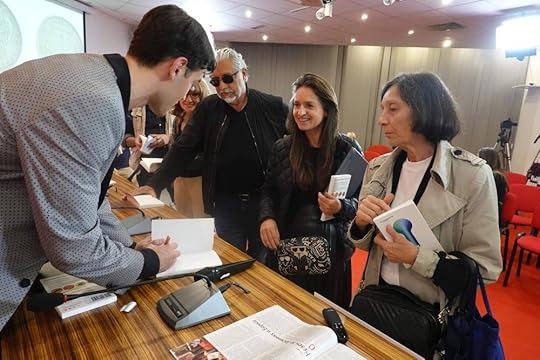
Oswalt signs copies of Tesla’s Words for journalist Aleksandra Otasević.
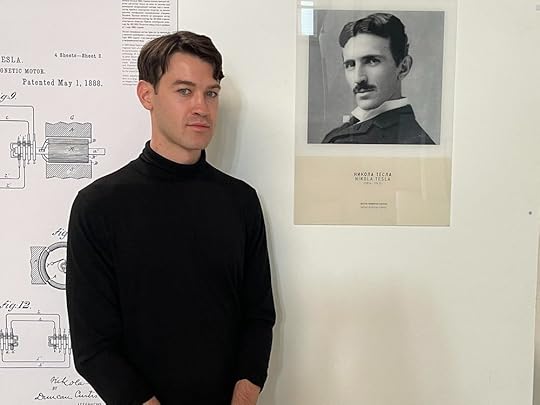
Oswalt is interviewed for UNA Television at a technology museum in Belgrade.
tap here to buy bookAugust 16, 2023
New York Herald: Tesla's Bright Light
This work is in the public domain and is published here to share with all.
TAP HERE TO RETURN TO THE FREE TESLA LIBRARY.
The New York Herald. May 24, 1896. Tesla’s Bright Light by Henry Tyrell.
Webmaster’s note:
One of the reasons many people will find this article interesting is because this article houses one of many instances in which Tesla says positive things about Thomas Edison.
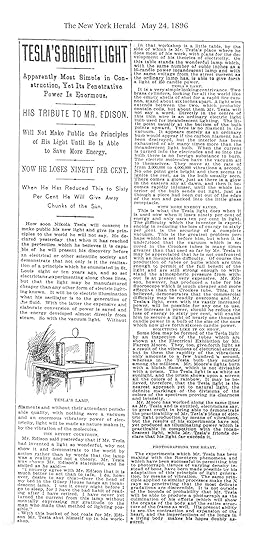
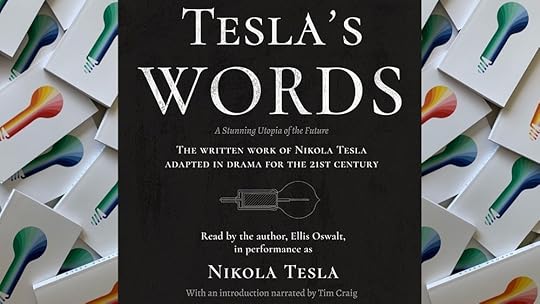
 TAP TO BUY THE BOOK!
TAP TO BUY THE BOOK!
January 21, 2023
Thinking Like Nikola Tesla
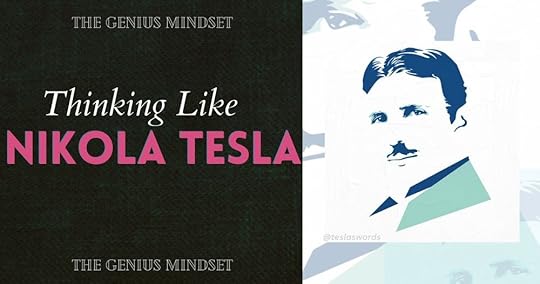
LEARNING FROM THE SIMPLE PHILOSOPHY OF A GENIUS
Nikola Tesla understood a very simple truth, and one which every genius in all of history would agree.
This simple truth can be used daily by anyone, no matter of ‘IQ' to increase the odds of finding your own strokes of genius.
THE SECRETS TO THE UNIVERSE
Tesla, the inventor of modern electrical distribution, remote control, and wireless communication is the subject of much conspiracy and folklore. A very popular quote about the “secrets to the universe” was never spoken by the man, but the real Tesla might suggest this for finding the secrets to the universe:
If you want to find them, you must maintain an overwhelming sense of optimism and faith.
A STRUGGLE FOR THE AGES
In Tesla’s memoirs, he recounts the first moment when he had the idea for A/C motors (the foundation for modern electricity). Tesla’s professor was demonstrating with a dynamo machine, and machines of this time wasted large amounts of energy in spewing excess sparks.
A young and overly optimistic Tesla spoke up in the lecture hall to propose that surely he himself could build a more effective machine. The professor famously embarrassed freshman Tesla by saying this would defy the laws of physics.
But this did not discourage Tesla. He endured naysayers and maintained an all-consuming devotion to this problem for years before he finally built the first successful A/C motor at age 27 — and once this was accomplished he immediately encountered a new problem:
Tesla was a nobody.
He didn’t have a college degree and he wasn’t famous.
How would he convince the world to use a new thing that nobody even understands? It would take years more of struggle.
As he moved from country to country in pursuit of this idea, always taking jobs in related industries, and trying to sell his idea to whomever he met. He quits on Thomas Edison, and he eventually started his own company making bright lights for lighthouses at sea. It was not Tesla’s first choice, but it’s what his investors told him would make money. According to his memoirs, they told him "No, we want the arc lamp. We don't care for this alternating current of yours."
So even with a business to his name, Tesla can’t sell to his own investors the idea of the A/C motor. But the genius inventor rose the ranks of society one year at a time, and he finally met the person who would need his new motor.
This idea he was obsessed with from age 19, and the motor he built at 27, finally became a global sensation around age 35. To even explore the possibility was an invitation for mockery from his expert professor, and in all this time he did not have a clue how he would get the world to use his motor.
Yet he maintained a Ludacris optimism that his idea was big.
He didn’t listen to voices that laughed at him.
He told himself, probably at every hour, that his gut had been right about his idea, and to follow it no matter the costs. And it is because of his intense courage that you are now reading words on a screen written from across the world.
THE KEY LESSON WE CAN LEARN FROM TESLA
It is through hard work and discipline that genius is achieved.
Brains are not enough.
Before dropping out of college in his second year, Tesla was the top student in his engineering program, and he spent his spare time reading hundreds of books on every subject he found interesting.
In an interview in his elder years with Time Magazine (July 20, 1931), he told the interviewer that he tossed and turned at night thinking about the engineering problems that haunted him.
The pursuit of knowledge was his passion. It might be possible that Tesla wasn’t simply gifted with brains, but that his willingness to work and study without rest was his formula for success. It is the same pattern of obsession displayed by the likes of Leonardo Da Vinci or all the greatest sportsmen of history.
To achieve the extraordinary, it will require constant dedication.
So remember, if you want to find the secrets to the universe, you must always believe.
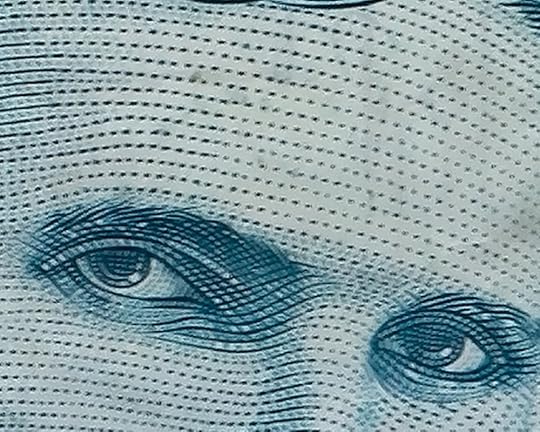
Ellis Oswalt is the creator of the independently published and critically acclaimed Tesla’s Words.
Tap here to discover more.


A special thanks to world-renowned Tesla experts for verifying my strong suspicion that the energy, frequency, vibration quote is a fake.
Tim Eaton.
Marc Seifer.
Branimir Jovanovic.
Please purchase their books and be sure to watch Mr. Eaton’s Tesla Files on the History Channel.
A special thanks also to AAP Fact-Check for interviewing me on the subject of fake Nikola Tesla quotes.
—And don’t forget to check out Tesla’s Words by Ellis Oswalt.
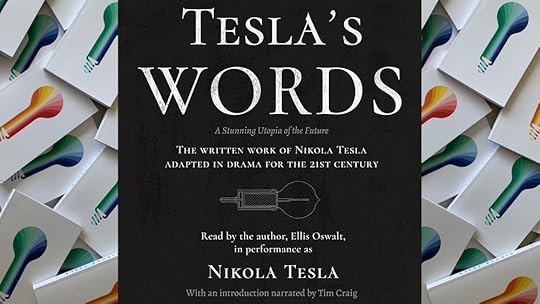
The impossible is EASY.
By Ellis Oswalt

LEARNING FROM THE SIMPLE PHILOSOPHY OF A GENIUS
Nikola Tesla understood a very simple truth, and one that every true genius in all of history would agree.
This simple truth can be used daily by anyone, no matter of ‘IQ', to increase the odds of finding your own stroke of genius.
THE SECRETS TO THE UNIVERSE
While I regret to inform you that the very popular Tesla quote about energy & vibration was never actually spoken by the man, here is what the real Tesla would say about finding the secrets to the universe:
If you want to find them, you must maintain an overwhelming sense of optimism and faith.
There is a very popular story about Tesla in which he recounts the first moment when he had the idea for alternating current (the foundation for all of our technology). Tesla’s professor was demonstrating with a dynamo machine, and machines of this time wasted large amounts of energy in spewing excess sparks. A young and overly-optimistic Tesla spoke up in the lecture hall to propose that surely he himself could build a more effective machine. The professor famously embarrassed freshman Tesla by saying this would defy the very laws of physics.
But this did not discourage Tesla. He endured negativity and naysayers, and maintained an all-consuming devotion to this one problem for years before the first A/C motor was finally built. But here is the key ingredient that allowed him to do this:
Most people discount themselves, or abandon the possibility that they can achieve greatness in some form. They look at someone like Tesla and believe it is merely genetics which sets them apart from a genius of this kind. This is a deadly mistake.
It must be remembered that for years, Tesla was obsessed with this idea of the A/C motor. He did not have a clue how it would be accomplished. To even explore this possibility was a constant invitation for mockery. He was a simple college freshman, then sophomore, then drop-out. He had never in his life achieved anything at all, apart from excellent grades (most of the time). He had no reason to believe he was special. He had no reason to even believe in his own idea.
Yet he maintained his optimism that he was onto something BIG.
He disciplined himself.
He told himself, probably at every hour, that his gut had been right that day in the lecture hall, and to follow it. No matter the costs, he would maintain that optimism and faith.
And it is because of his intense faith that you are now able to read these words on a screen.
This is the lesson we can all learn from Tesla:
To achieve genius is not outside of anyone’s reach.
It is only through hard work, rigid discipline, focus, and above all, POSITIVITY, that genius can be achieved.
Our era is consumed with negativity, hatred, and nihilism.
So remember, if you want to find the secrets to the universe, you must always believe.
Ellis Oswalt is the creator of the independently published and critically acclaimed Tesla’s Words.
Tap here to discover more.


A special thanks to world-renowned Tesla experts for verifying my strong suspicion that the energy, frequency, vibration quote is a fake.
Tim Eaton.
Marc Seifer.
Branimir Jovanovic.
Please purchase their books and be sure to watch Mr. Eaton’s Tesla Files on the History Channel.
A special thanks also to AAP Fact-Check for interviewing me in 2020 on the subject of fake Nikola Tesla quotes.
—And don’t forget to check out Tesla’s Words by Ellis Oswalt.



